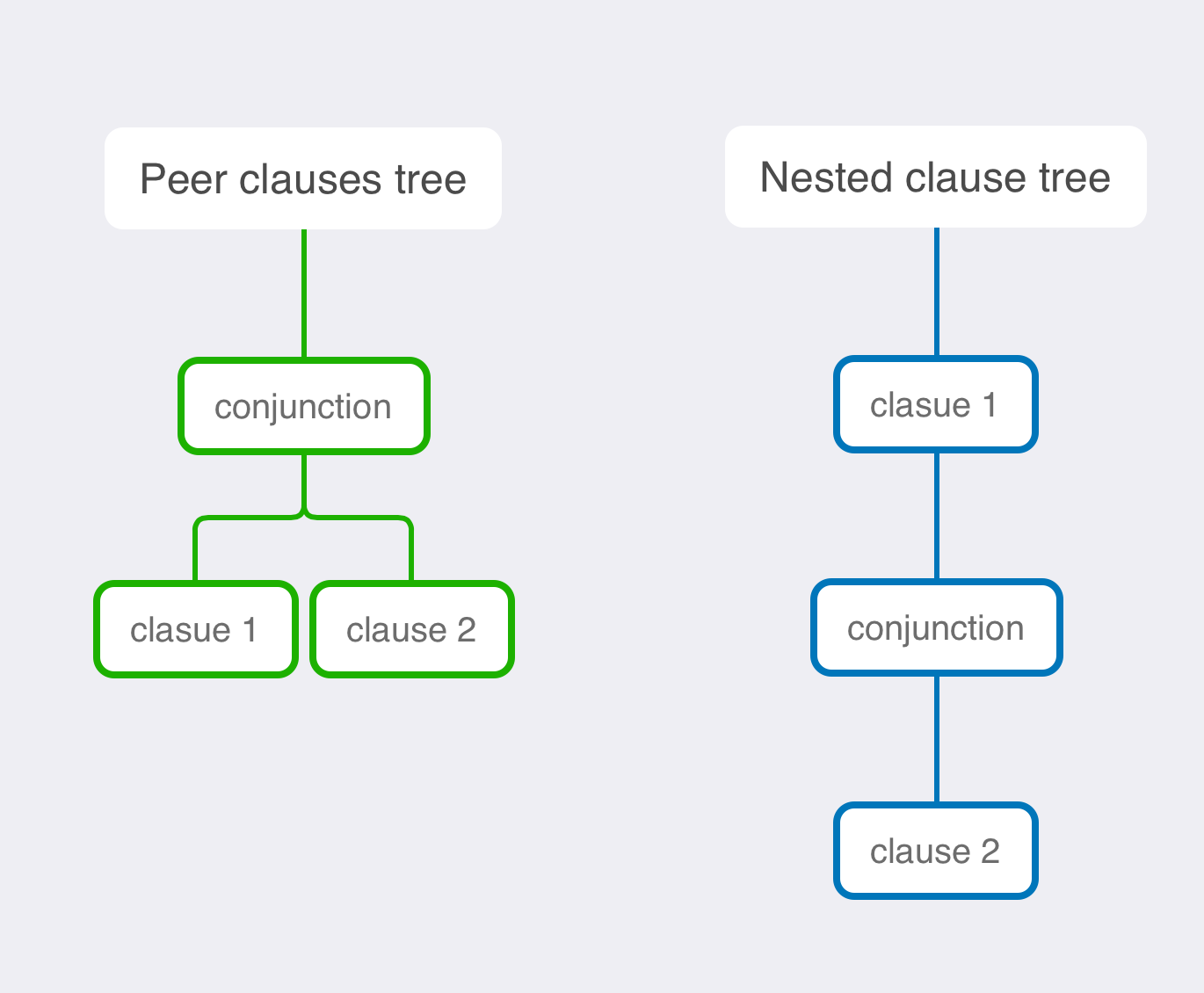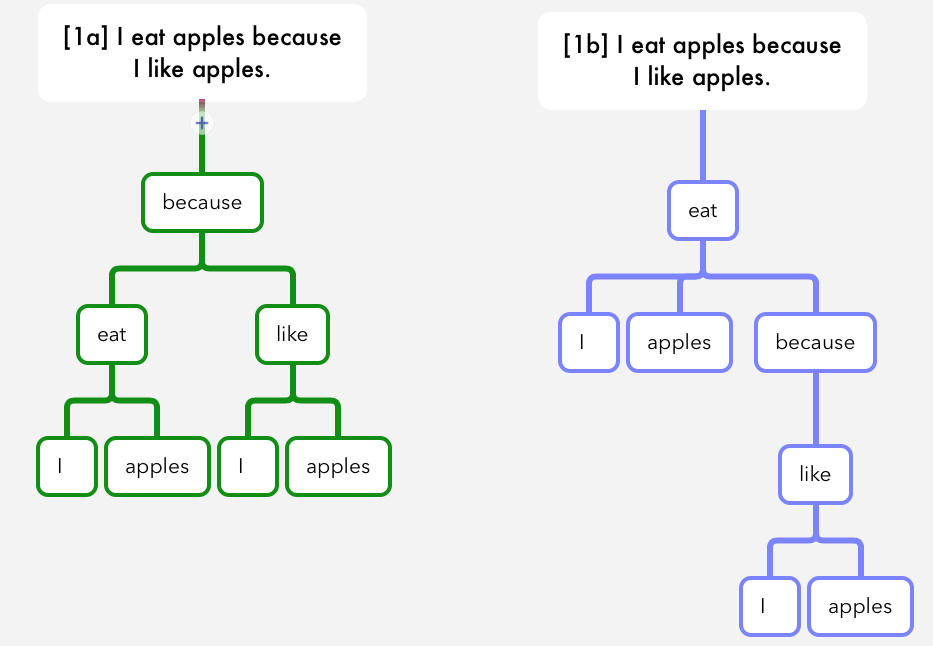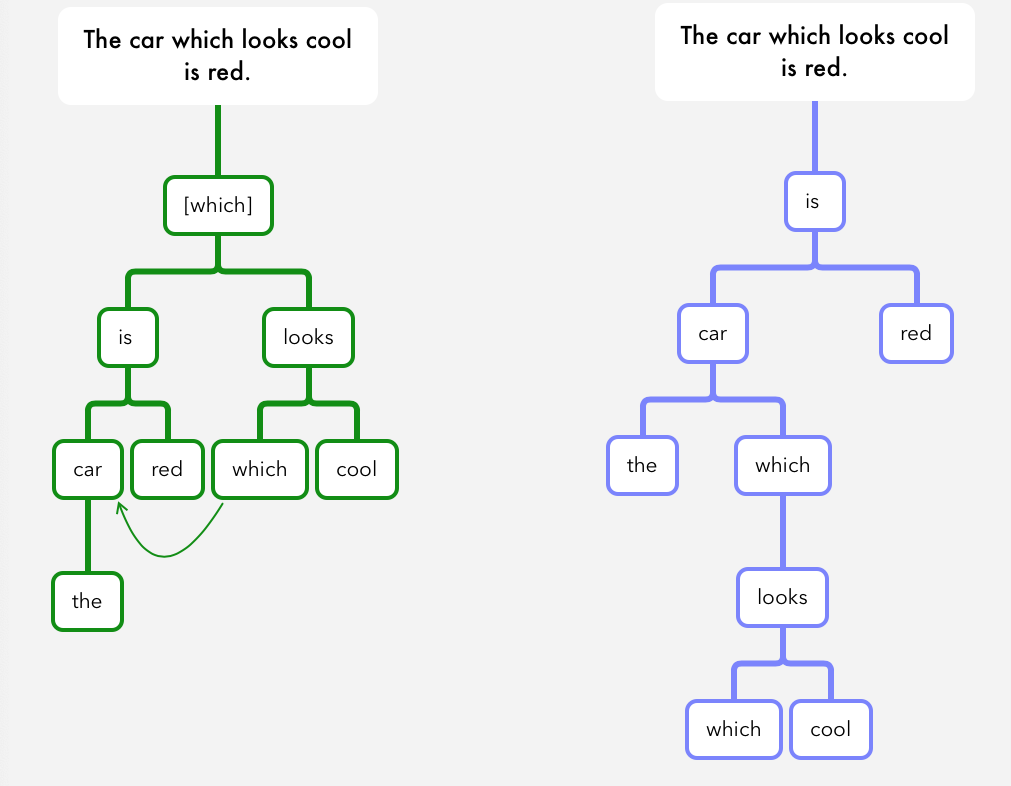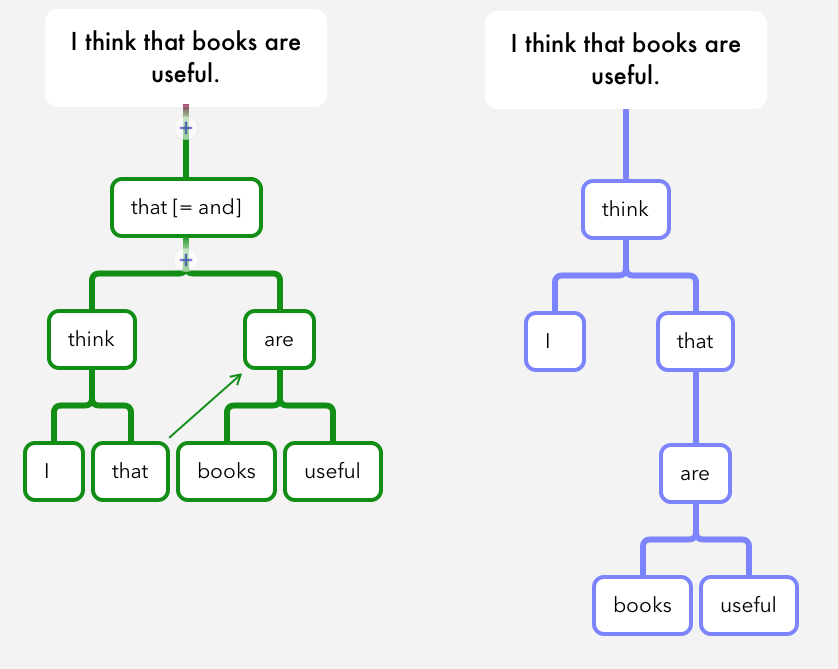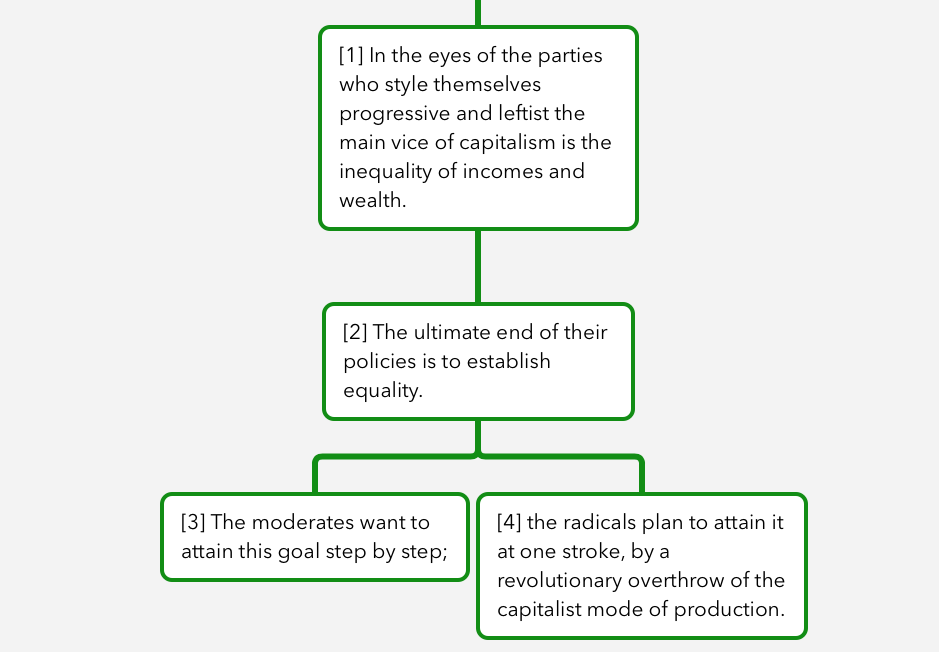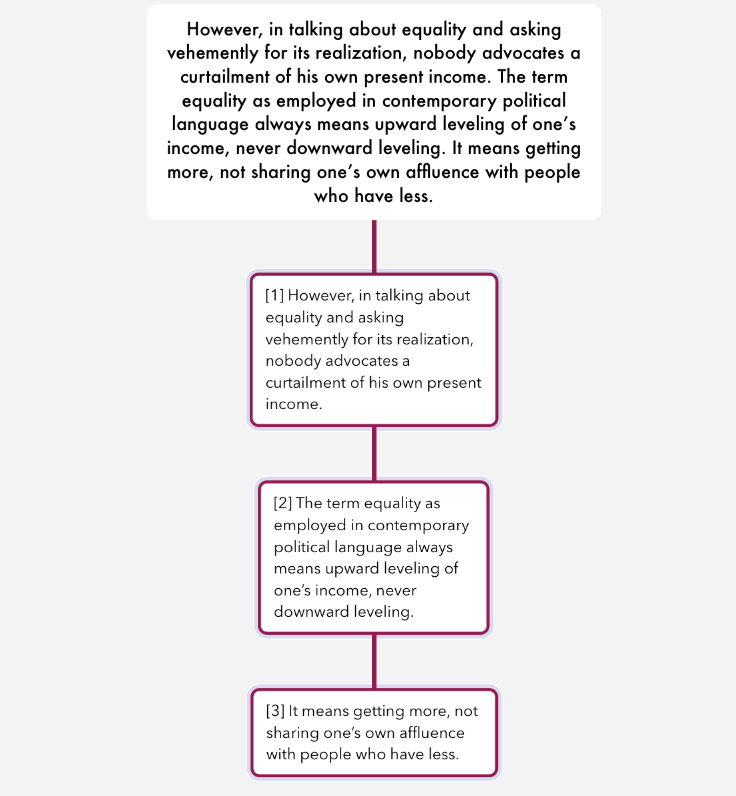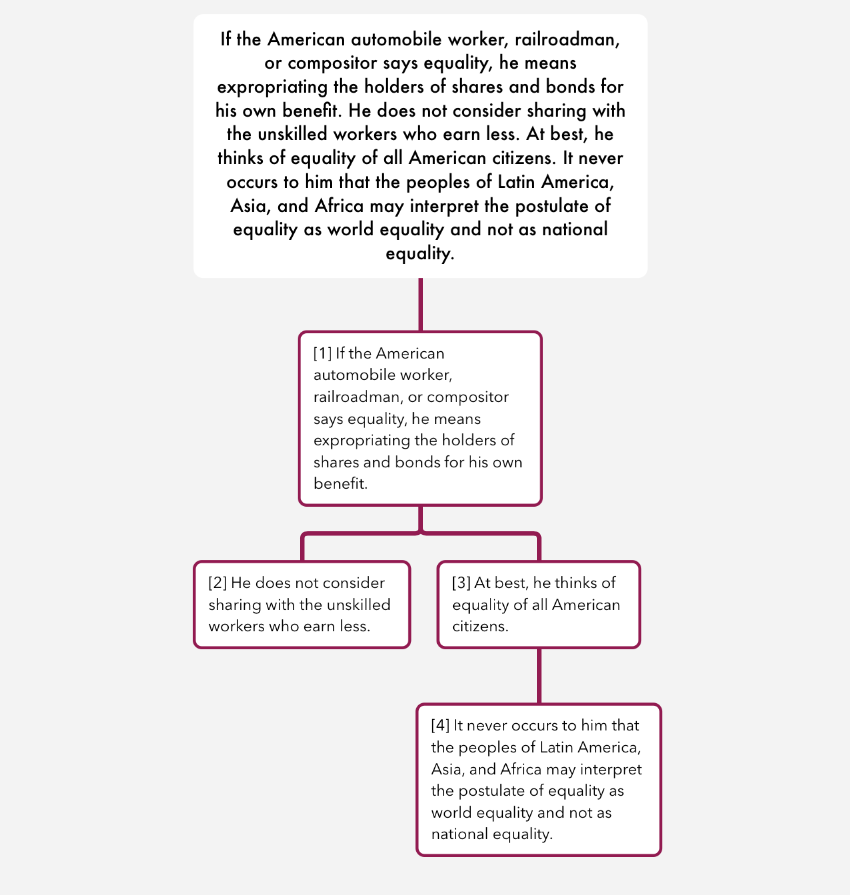Some more paragraph trees. All are consecutive paragraphs from Profit and Loss by Ludwig Von Mises. Part B, section 4: The Equality Argument.
In the eyes of the parties who style themselves progressive and leftist the main vice of capitalism is the inequality of incomes and wealth. The ultimate end of their policies is to establish equality. The moderates want to attain this goal step by step; the radicals plan to attain it at one stroke, by a revolutionary overthrow of the capitalist mode of production.
[1] In the eyes of the parties who style themselves progressive and leftist the main vice of capitalism is the inequality of incomes and wealth.
[2] The ultimate end of their policies is to establish equality.
[3] The moderates want to attain this goal step by step;
[4] the radicals plan to attain it at one stroke, by a revolutionary overthrow of the capitalist mode of production.
1 is root. Topic is that the left parties think the main thing wrong with capitalism is wealth inequality.
2 talks about the left parties and their goal to establish equality.
3 is a child of 2. It talks about the goal in 2. It doesn’t make sense without 2. It talks how to moderates want to achieve the goal.
4 is a talks about how the radicals want to achieve the goal in 2.
I think 3 and 4 are siblings.
However, in talking about equality and asking vehemently for its realization, nobody advocates a curtailment of his own present income. The term equality as employed in contemporary political language always means upward leveling of one’s income, never downward leveling. It means getting more, not sharing one’s own affluence with people who have less.
[1] However, in talking about equality and asking vehemently for its realization, nobody advocates a curtailment of his own present income.
[2] The term equality as employed in contemporary political language always means upward leveling of one’s income, never downward leveling.
[3] It means getting more, not sharing one’s own affluence with people who have less.
I think 1 is the root. In advocating equality, nobody advocates a curtailment of their own income. I think that’s the topic.
2 says that the term “equality” as used in contemporary politics always means an upward leveling. I think 2 is a child of 1.
3 says the term means getting more for oneself, not sharing with those who have less. 3 is giving more details about what people think equality would mean. I’m not sure if 3 is a child of 1 or 2. 3 shares some similar features to 2, kind of like a restatement. 2’s structure is: X means always Y, and never Z. 3’s structure is: X means P and not Q. I think 3 is a child of 2. Its more detail, or further elaboration on 2 in the style of a restatement.
If the American automobile worker, railroadman, or compositor says equality, he means expropriating the holders of shares and bonds for his own benefit. He does not consider sharing with the unskilled workers who earn less. At best, he thinks of equality of all American citizens. It never occurs to him that the peoples of Latin America, Asia, and Africa may interpret the postulate of equality as world equality and not as national equality.
[1] If the American automobile worker, railroadman, or compositor says equality, he means expropriating the holders of shares and bonds for his own benefit.
[2] He does not consider sharing with the unskilled workers who earn less.
[3] At best, he thinks of equality of all American citizens.
[4] It never occurs to him that the peoples of Latin America, Asia, and Africa may interpret the postulate of equality as world equality and not as national equality.
I think 1 is root.
2 seems like a part of 1. 1 talks about how the worker means expropriating those economically above him. 2 comments on how he doesn’t consider that equality could mean sharing with workers below him.
Is 3 a child of 2 or 1? I don’t think that 3 depends on 2. I think that 2 and 3 are siblings.
What is 4 a child of? I think just a paragraph of {1, 4} makes sense. I don’t think 4 depends on either 2 or 3. Although, 4 does talk about world equality vs national equality, and 3 talks about national i.e American equality. Okay, actually I think that 4 makes more sense as a child of 3. It brings up world equality in response to national equality.
